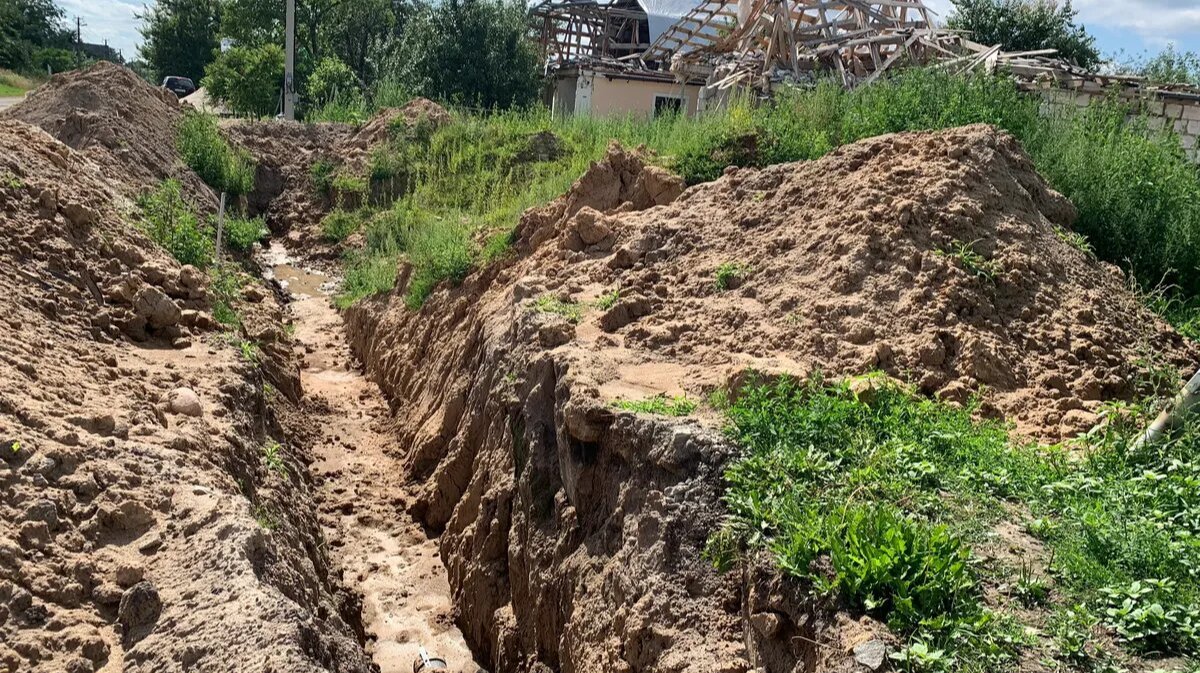Russia’s army attempted to take Nalyvaikivka by assault six times in March. Makariv-Agrobud, a private agricultural enterprise, was in their way.
The taxi driver who took me here from Makariv, a bigger settlement nearby, says he feels sorry for the local community as we approach the grain storage with no roof and holes the size of a football in its fence:
"Poor folk. This settlement used to be quite a wealthy one before. Although…"
A sweetcorn field, as green and thick as a forest, is just across the road.
How they got so lucky
It took me several weeks to arrange a meeting with Illia Potapenko, the director of Makariv-Agrobud. The reason behind this is that he was travelling back and forth between Nalyvaikivka, where Agrobud owns around 15,000 acres of arable land, and a land plot in the Mykolaiv region three times as large in their possession. The company also owns a huge cattle farm in the region of Cherkasy. I wander around the area for a while but do not find anything like an office building out there.
“Burned to the ground! They burned our canteen too, what a lovely canteen that was! They messed up everything here," says a man who is filling in some forms on the hood of a Škoda. “Thank God they didn’t hit our fuel warehouse, though. That would have been a hell of a fireworks display.”
After I ask him if he knows where the company’s management is, he smiles, puffs his chest up, and points to a construction trailer nearby:
“I’m Vasyl, a shareholder. Our boss is over there!”
Vasyl is one of the local residents who rented out their former kolkhoz land plots to Agrobud back in the day and now care about the enterprise just as much as they do for their lives. They will only have money to survive if they manage to gather the crops, sell them and get their (obviously low, due to the ongoing war) profits. This is pretty much like joint responsibility, if you will.
Illia Potapenko, a young bulky man, is sat beside his laptop sipping coffee and scrolling through some documents as he calmly explains to someone over the phone that he needs “37 thousand metres of tote, not twelve, and six metres of thread per each tote.” I think he speaks about packaging, but I’m not quite sure. Gesturing to the chair, he opens his phone’s gallery to show me something. Nalyvaikivka was liberated by Ukraine’s army in April. Shortly after that, a group of officials from the country’s Chamber of Commerce and Industry came here to place the losses suffered by one of the largest local taxpayers on record.
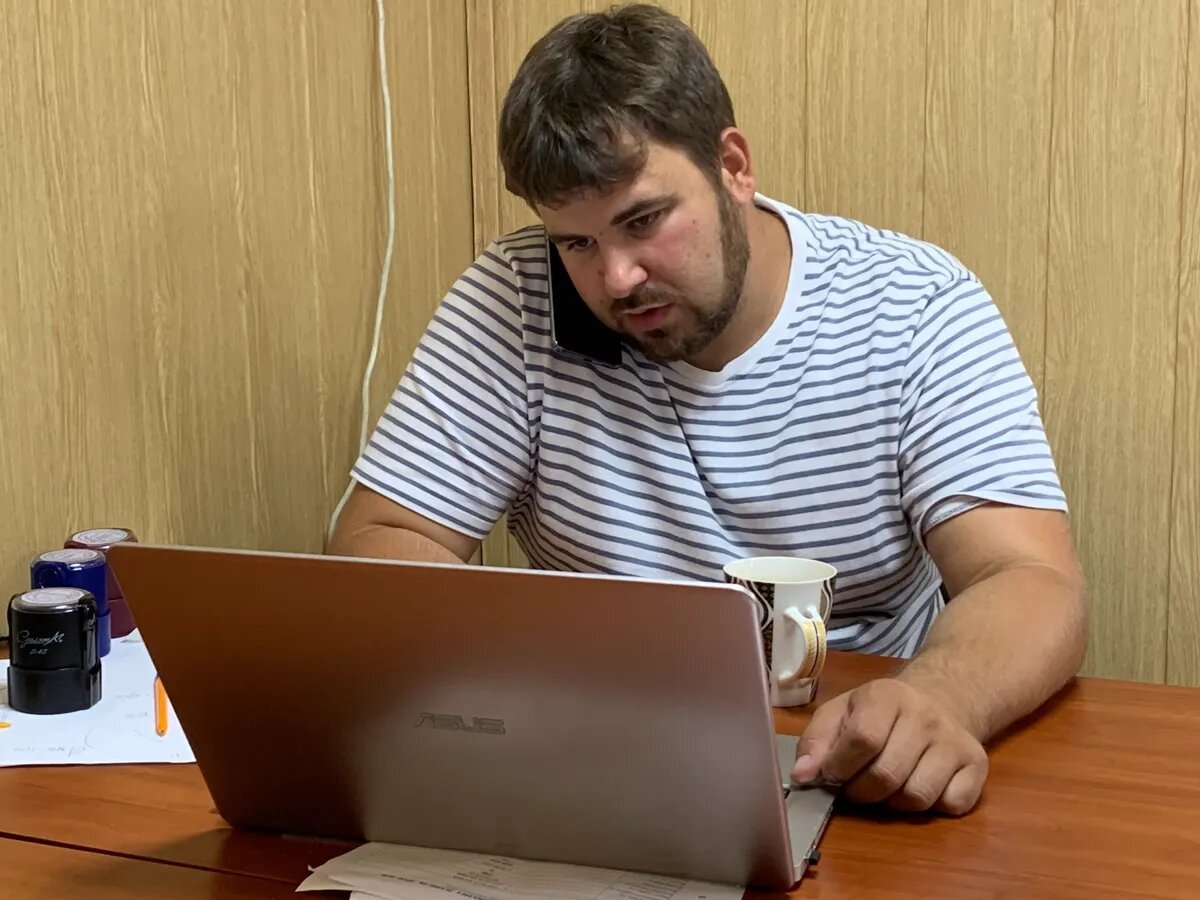
Illia Potapenko, director of Makariv-Agrobud. Photo by Olga Musafirova
Illia shows something else besides the pictures of warped metal, bomb craters, and rocket launcher tubes that everyone is used to at this point. He shows us the photos of destroyed facilities the enterprise considers the most valuable. Ukraine’s grain warehouses were attacked wherever Russia’s weapons could reach and are now called “starry skies.” This is exactly what you see when you enter a grain warehouse in the daytime. It feels like visiting a planetarium: myriads of holes of different sizes above your head... Rains shower the grain through a roof which looks more like a sieve basket now, spoiling the entire stock.
Agrobud’s warehouses were also shelled by flame projectiles, just for good measure.
Seven thousand tons of top-quality sweetcorn burned for a long time, and there was nothing to extinguish the fire with. The sweetcorn then turned into a substance resembling spongy hardened lava.
“Billions [of hryvnias] burned,” says someone who was shooting the burning hill on camera.
Illia closes his phone’s gallery, and I’m not sure how to manage our conversation anymore. One of the grain warehouses looks like new: it had its roof replaced recently; and welders are working on another one, same as the local grain drier. A group of electricians fixed the damaged cables in just two weeks, says Potapenko.
“And we have managed to sow most of our fields.” He speaks perfect Ukrainian and pretty decent business English (says he had internship work abroad). Illia studied computer science at Kyiv’s National University, but switched to agriculture without a hitch:
“This is a family business,” he says.
Many of his answers start with “we got lucky.” Is this some kind of superstition? “We got lucky”: the sweetcorn for sowing had been bought last October since a good farmer starts thinking of the upcoming spring as early as in autumn. The sweetcorn, however, had not been retrieved from the supplier, so the time worked for Agrobud. “We got lucky”: some part of the machinery had been transferred to the Mykolaiv region before the war began as the sowing season starts earlier in the south, and the rest of it had been hidden in the forest just as the shelling began. “We got lucky and did not wait until the State Emergency Service came to clear the fields of mines, but used their instructions to do it on our own.” This is where I interrupt Illia to ask for more details.
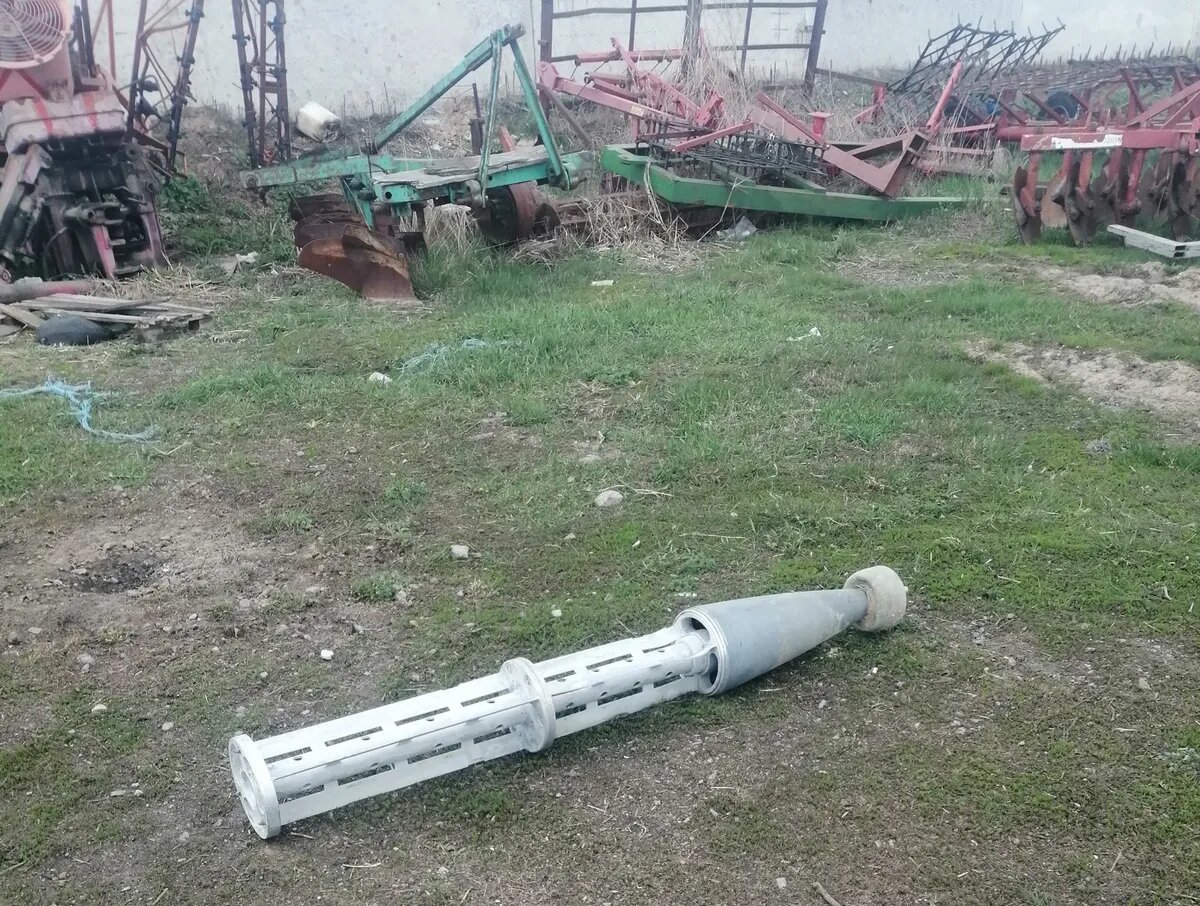
A rocket launcher tube. Photo by Illia Potapenko
“Well, when we managed to repel the Russians, the ground was dry, and we missed the time when hoeing had to be done, so there were lots of ill weeds. So, we had to decide whether we should sow anything at all this year. If yes, then we had to rebuild the warehouses, and do many other things.”
Fifteen shareholders, many of them veterans of 2014-2015 Donbas War, volunteered to inspect the land. They would mark explosive items with red stakes and contact the bomb defusers, sharing photos and location, so the latter only had to come and defuse the mines. It took Agrobud a month to clear their fields of mines, and Illia worked alongside others.
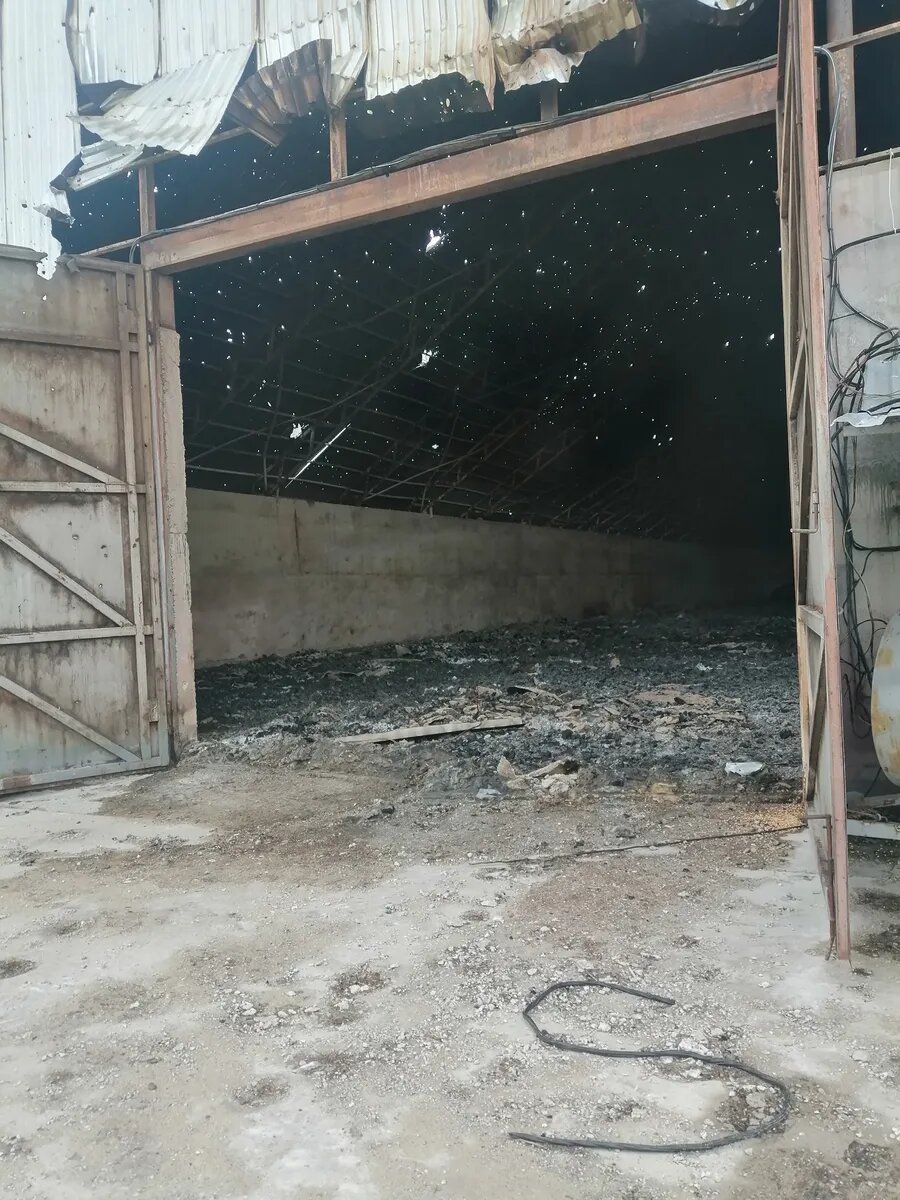
The starry sky: a destroyed grain warehouse and the sweetcorn lava. Photo by Illia Potapenko
“Weren't you scared?” I ask him.
“I don't get the question. Where would I send my people and machinery otherwise? The Emergency Service is too busy right now, we would have needed to sow towards the winter should we have waited for them, which, of course, is against the European standard.”
We then remember the new risks, namely the UN-observed negotiations between Russia and Turkey. It looks like Ukraine’s sea ports are going to be cleared of mines to re-establish the country’s worldwide grain exports.
“There's no other way. Although visas had been waived for Ukraine's trucks, it's an expensive means of transport,” Potapenko says. “Transporting grain to Poland by road means wasting half of its value with the current gas prices. Moreover, crossing the border, passing through customs and all sorts of legal things take too much time. Transporting grain by trucks is suitable for the regions of Ukraine's west. We have our presence in the regions of Kyiv and Mykolaiv, and it's just too far away from the western border. So, railways and sea are the remaining options, but sea is way better. A train car may be stalled for a month, waiting to be unloaded. They got rid of our grain reserves [Illia makes a short pause in his speech]. Other farm businesses had almost half their last year’s harvest left, though. It was difficult to purchase machinery due to COVID. So, there was a shortage of machinery, and many businesses lined up for the equipment. Those who managed to sell their grain could not spend the earnings efficiently, anyway. So, the entire industry was waiting for the better times.”
This year, rains followed the drought season in the Kyiv region, which is good news for sweetcorn farmers. They will start gathering their crops in September and finish before the cold weather kicks in. Potapenko hopes it becomes clear if “the Turkish option” works by that time.
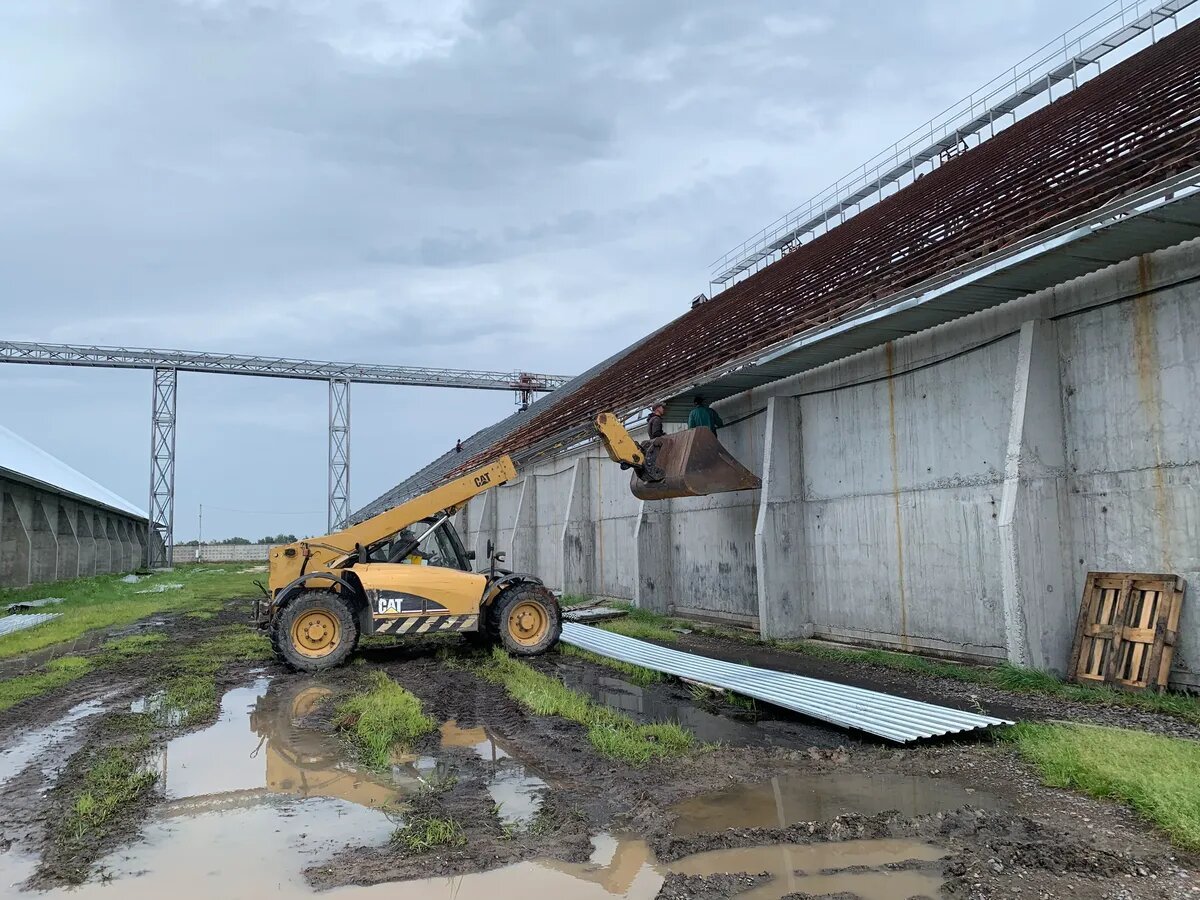
Reconstruction of Agrobud. Photo by Olga Musafirova
The wheel must keep spinning
Marharyta Terekhova, the head of Nalyvaikivka, takes me to see a football pitch with artificial turf on her minicar. This is where the village boys are playing football, screaming in excitement. These are relaxing sounds for the locals after the spring shellings. The pitch remained intact, but a shell hit a banner near the entrance. Marharyta is planning on constructing a skatepark in Nalyvaikivka soon. She has an answer ready for those who might say that this is too ambitious a plan for the time of war. The answer is: maybe a feast on 28 June, Ukraine’s Constitution Day, should have been cancelled, too; the day when people sang, cheered and cried at the same time?
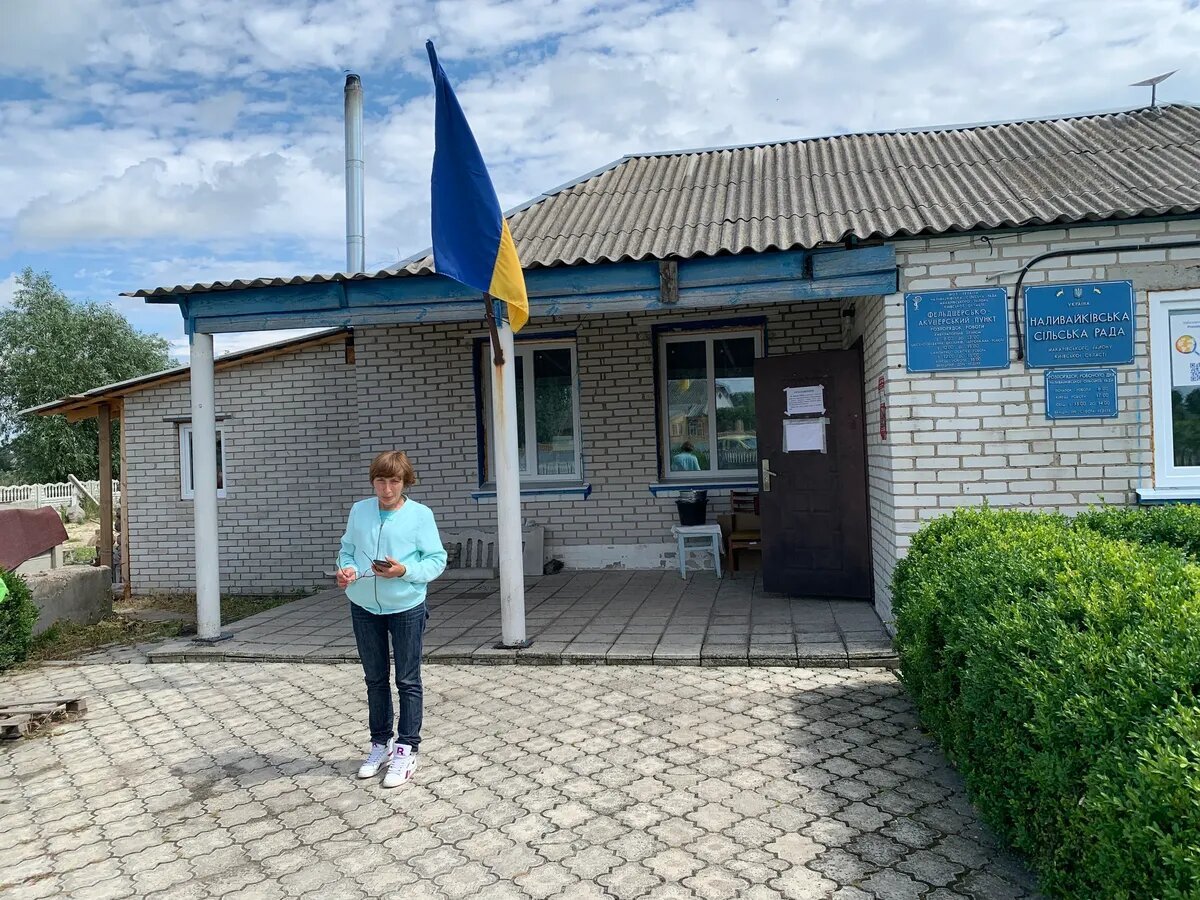
Marharyta Terekhova, head of the village. Photo by Olga Musafirova
Terekhova, a slim woman, is known for closing an illegal landfill in Nalyvaikivka where garbage trucks from Kyiv or even Lviv disposed of their litter. She also set up waste sorting in the village. One can see many green and yellow garbage bins in the streets of Nalyvaikivka. But now, of course, the bins are surrounded by growing heaps of asbestos. The locals need to replace the roofs of their houses before winter comes. Marharyta recalls how she and her associates taught the villagers how to sort waste:
“Olha Domashchenko used to go through other people's garbage bins wearing rubber gloves. Her mother stood beside her, whining: ‘Is this what I sponsored the two degrees of yours for?’”
Marharyta speaks highly of Illia Potapenko who helped renovate the local school and the village hall after the Russians retreated. She feels sorry for Aeropakt, an ultralight aircraft manufacturing factory which used to be the pride of Nalyvaikivka and suffered heavy damage in the spring. The village also had a unique snail farm which folded after the start of hostilities: the snails did not survive the shellings.
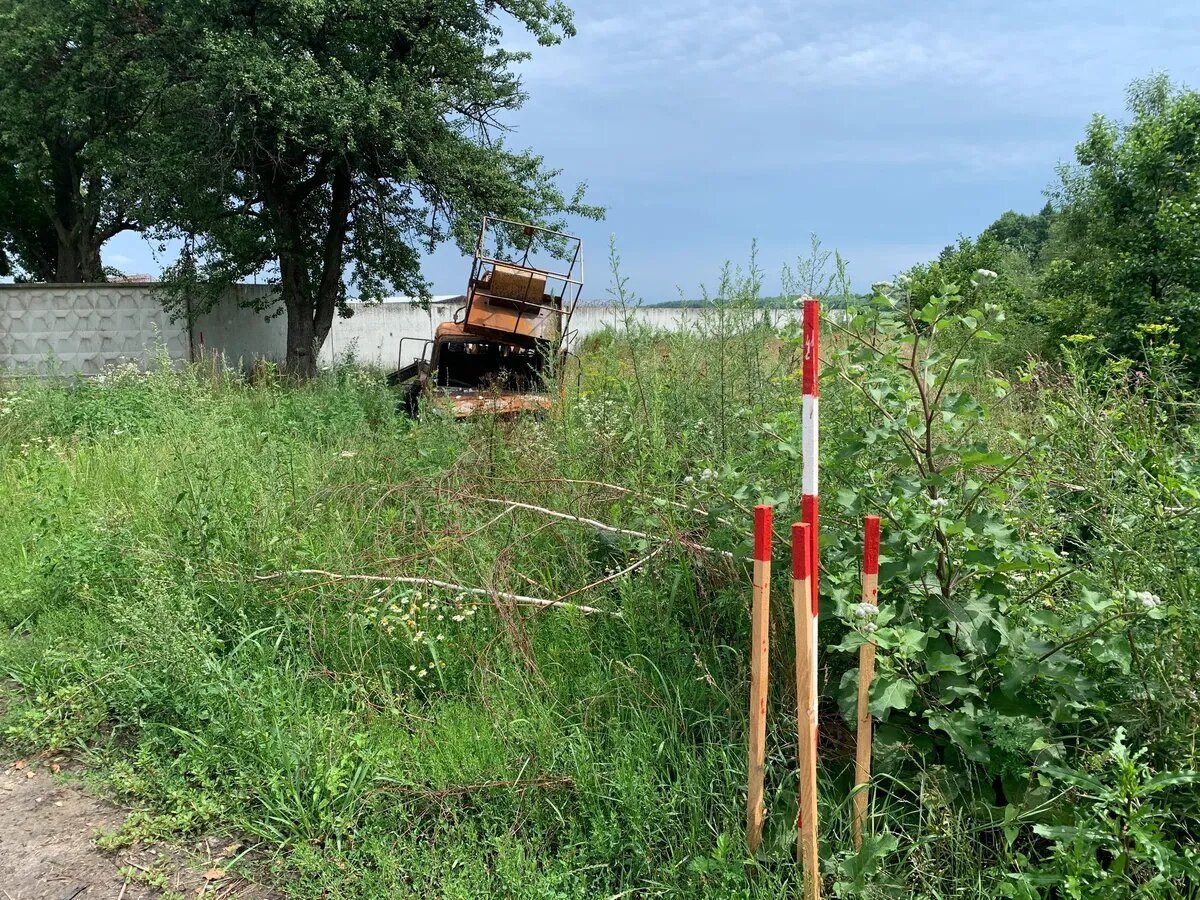
Red stakes which mark active mines. Photo by Olga Musafirova
The farmers, however, did. Serhiy Omelchenko has about a thousand acres of wheat and barley, three John Deere harvesters, an unofficial title of “the father of the village”, and sorrow in his voice:
“I’m as impatient before the harvest as a groom is before his wedding. I was cruising around my fields today, and it started raining. What can you do!”
I can barely keep my mouth shut to avoid saying that Potapenko is in fact happy about the rain. Maryna said there was no man like Omelchenko in the village: a jack-of-all-trades, always concerned about the common good. Millers from the neighbouring village of Stavyshche came to his aid and bought what was left of his last-year’s harvest, although at a very low price. The building where Serhiy stored his grain and machinery remained intact; a shell hit the ground some 60 feet away. Serhiy, a veteran of the Soviet-Afghan War, lost one of his fingers recently, but considers this as something of little importance:
“When we fought in Afghanistan, it was forbidden to shoot at villagers. But these bastards were ordered to shell residential areas and farms deliberately, I think.” He could not believe the war would actually begin until the very last day.
Now he is skeptical about the grain ceasefire:
“If we clear our sea ports of mines, they will attack Odesa immediately.
But if the sea route remains closed, we’ll be forced to sell our new harvest on our domestic market, twice or even thrice as cheap. So, we won’t have any extra money for investments, and won’t be able to sow the winter crops. The wheel must keep spinning,” Omelchenko says.
“What if the government bought the goods from Ukraine’s farmers and let them keep it until next year, would that work?” I ask him.
Neither of us come up with an answer.
Maryna Radchenko
“They dropped their first bombs here on 8 March. It was two o’clock in the afternoon, they attacked the heart of our village, next to the church. I was at the local first aid station, brought some food for the wounded soldiers. We didn’t realise what was going on at that moment. There was a massive shock wave, so we fell to the ground. The explosion covered the centre of our village with dirt. Our local man Ivan was riding his bicycle. “I opened my eyes and saw a huge black cloud instead of the sky; I was all covered in dirt. Thought I was in my grave already,” Maryna laughs as she retells Ivan’s words. “They dropped six more bombs right here at eight in the evening. Here, look. A huge plane flew above the village, it had three bombs on each side...”
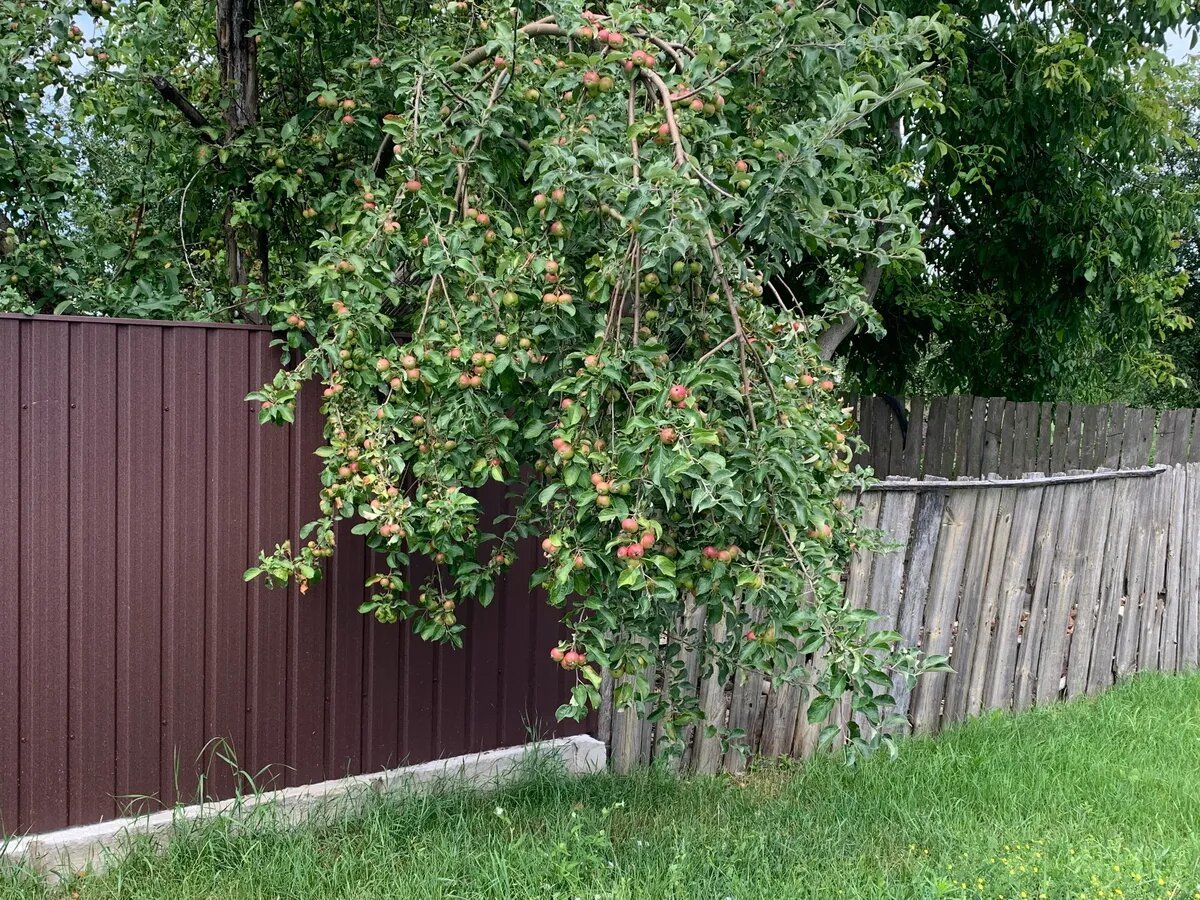
Photo by Olga Musafirova
The start of Nalyvaikivka's Shevchenko Street is but debris of the destroyed houses. Some fences survived the shelling, and are now supporting the heavy branches of apple trees. The apples are still green. Plants here sort of conceal the frightening things; the mallow flowers blossom white, pink and crimson all around. They grow over a deep pit which looks like a grave, too. This pit is a bomb crater created by an old Soviet 500-ton jumbo.
Shevchenko Street was attacked first.
Maryna points to the rafters in someone's garden:
"A Russian tank hit this house. A woman survived, but her son was killed. It then hit that building: a man was injured by the debris of his collapsing house. The doctors saved him, but he died of heart attack soon afterwards."
Maryna Radchenko is a solid-bodied, round-faced woman who used to be the head of Nalyvaikivka in the past. She has the handshake of a man, a memory of a school teacher (indeed, she taught geography at the local school before she was elected) and bright, daring eyes. Maryna drives a Volkswagen as hefty as herself. She signed up to become member of the local territorial defence unit on the same day the war started and joined nine other villagers, including Dmytro Tokar, veteran of the Donbas War, and Ruslan Lazebny, captain of the local football team. Maryna has two daughters — one is about to give birth — sons-in-law, grandkids, her own farm…
The birds are chirping, and a group of local cats, each thin as a rail, are rubbing their bodies against my calves. Yevhenia, an old woman, is here to feed the cats and the dogs; she’s carrying a bowl of noodles with gravy. She waves me off and does not want to talk: her house is beyond repair and may collapse any minute; but still Yevhenia is reluctant to leave — this house is her entire life full of bright memories.
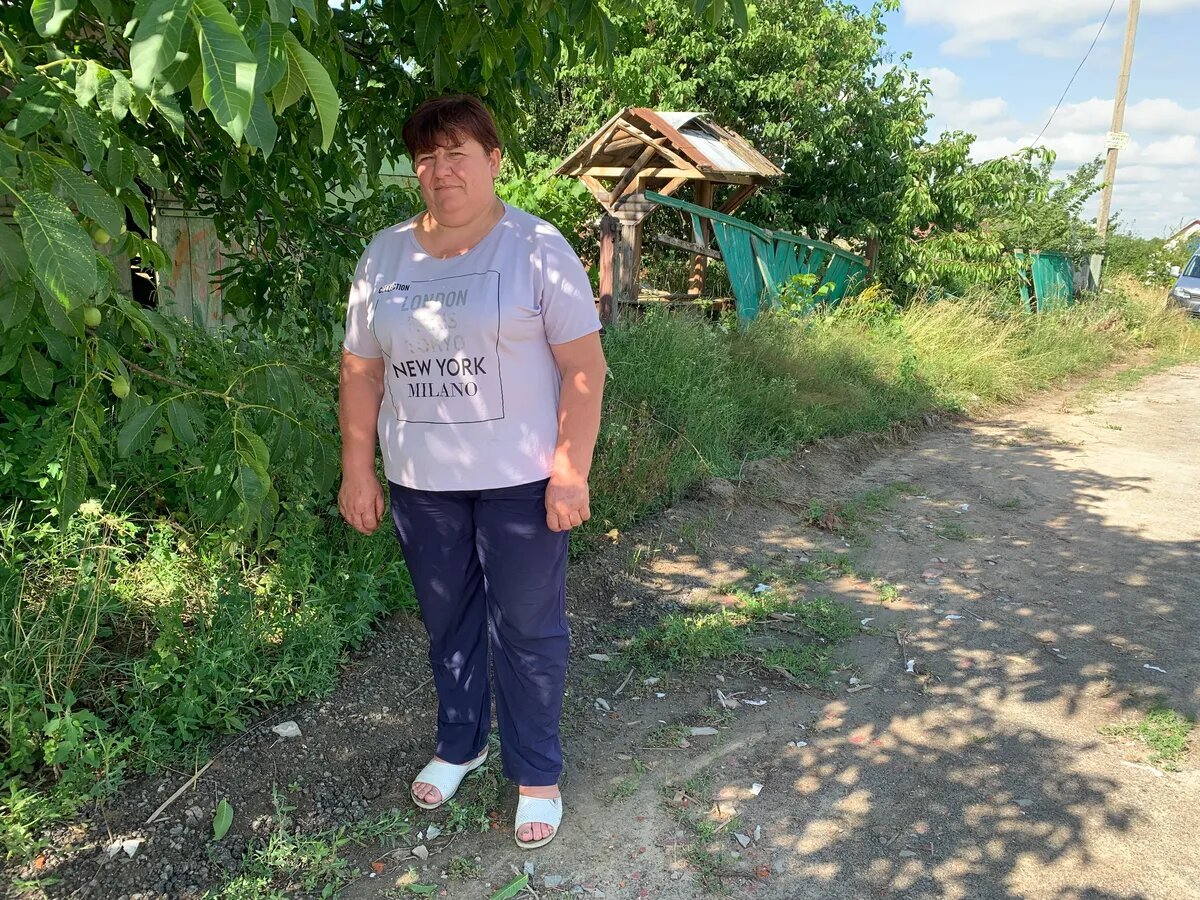
Maryna Radchenko. Photo by Olga Musafirova
"Some people moved here from Kyiv as the war began, thought it was safer here," Radchenko says. She also tells me how they taught people to use Molotov cocktails. The HQ of the local territorial defence unit is located at the local eatery.
"We used to cook food for our soldiers here. Our villagers would bring them tea, coffee, fried eggs, that sort of thing. It was cold and damp back then. So, we cooked hot soups for them, too.
"Where did you get the groceries?" I ask her.
"The people would donate their food for the soldiers. They would ask what else the lads needed, although they were kind of afraid since there were fights in the area. Many of them helped us do the cooking. And then there was no more bread in the shop, so the villagers started to bring their own flour and we did some pancakes for the soldiers."
The residents of Nalyvaikivka did not proclaim any slogans like "unity of the army and the folk". Nalyvaikivka simply did not let the Russian army through to Kyiv, with the help of Ukraine's army but with no fanfare.
I can hear the buzz of a power saw and the sound of a spade scratching against stone. Yury, Yevhenia’s neighbour, is not waiting for the government to aid him; instead, he is destroying what’s left of his house. He will soon build a new one. Near his house is a linden tree cut in half by a shrapnel. Its bottom part has already developed new leaves and is willing to survive, same as the local people.
Maryna Radchenko kept herself busy with helping soldiers so as not to become desperate. She would heat up the water, wash their socks, and dry their boots over the fireplace as she was afraid they might catch a cold. The soldiers would sleep for a couple of hours and set off for their duties. And she would start her routine all over again.
Through the woods
Russia captured the neighbouring village of Pochepyn on 2 March. Maryna drove the Ukrainian soldiers to their positions.
“My car was full of weapons, Javelins, NLAWs. As we reached Shevchenko Street, I saw Mykola Omelchenko running towards my car, screaming: ‘Turn around, their tanks have broken through!’ I didn’t know what to do. The lads jumped out of the car and prepared to fight. I drove away, Russian tanks firing from the rear.”
Grad-launched missiles started hitting our village at two in the afternoon.
“I plucked up my spirits in the evening and started to think how to evacuate the villagers.” By that time, Maryna has already got used to evacuating the wounded to Bilka, a village 15 miles away where there was no shelling. Ambulance cars would pick them up there, and Maryna would load her car with bread from the local bakery. The baker would sell the bread at a low price, and Maryna gave it out to her villagers for free.
“I didn’t feel right actually selling this bread, although they offered money,” she says.
Maryna set up a plan by 5 March. She picked up her children and other relatives and told them they were leaving. Then she approached the soldiers to arrange an escape corridor. “I didn't say ‘quick’, I said ‘now’!” No one has the nerve to argue with Maryna.
A long line of cars gathered pretty soon; the volunteers brought a minibus to fit in the rest of the evacuees. Radchenko, who was born in the Zhytomyr region, called her native village, asking if there was any lodging there. With the help of Mykola Omelchenko, she escorted her caravan through the forest, instructing the people what to do in case of an ambush. However, this was only the first portion of refugees, mainly families with kids.
The next day Maryna, alongside Ruslan Lazebny, escorted the heavily wounded from Nalyvaikivka. The shelling was so harsh that nobody was sure if they would live to see the next day. Two people with open shrapnel wounds were put in a car trunk.
“You can’t imagine how loud they were screaming... Ruslan said they wouldn’t make it. I said they would. What else could I say? [Maryna takes a deep breath and remains silent for a while.] We had no bandages for them, so we gave them painkillers. As we escaped the village down the road full of potholes, we had to dodge Russia's Grad shells. We couldn’t go fast as this was too painful for the two in the trunk. God saved them, they made it. My car also remained intact.”
Milking cows during shelling
“As I returned to Nalyvaikivka, I had a discussion with my associates on how to convince the remaining villagers to evacuate.”
The people were reluctant to leave their property. A cow is not a cat, you cannot just put it in a carrier and go.
“I own four cows,” Maryna says. “This means cheese, sour cream, milk, butter... You know, if you have a big family, you won’t make it without a cow.”
Maryna had a discussion with Serhiy Omelchenko. The two decided to bring the cows to an old farm just outside the village. The people cried as they let their cows out of their barns, they didn’t expect to see their cattle ever again.
“We used to milk the cows once a day. There were about 40 milking cows out there...”
“Did you milk them with your bare hands?” I ask Maryna with shock.
“Of course not, we have milking machines, it’s the 21st century,” she answers my awkward question. “We brought some of the cows to my house so as to save some distance. The milk was freezing at the old farm, so we gave it out to the pigs. We milked those cows at home twice a day and made cheese and sour cream out of the milk. Then we would send it to the Zhytomyr region where our evacuees stayed.”
Obviously, the old folk was unwilling to leave. Meanwhile, Russia’s shelling intensified. Maryna hated the Grads the most. “You can’t hear it coming when your engine is on,” she says. So, she preferred to get around by bike, although she had her knees bruised as she often fell to the ground when shelling started.
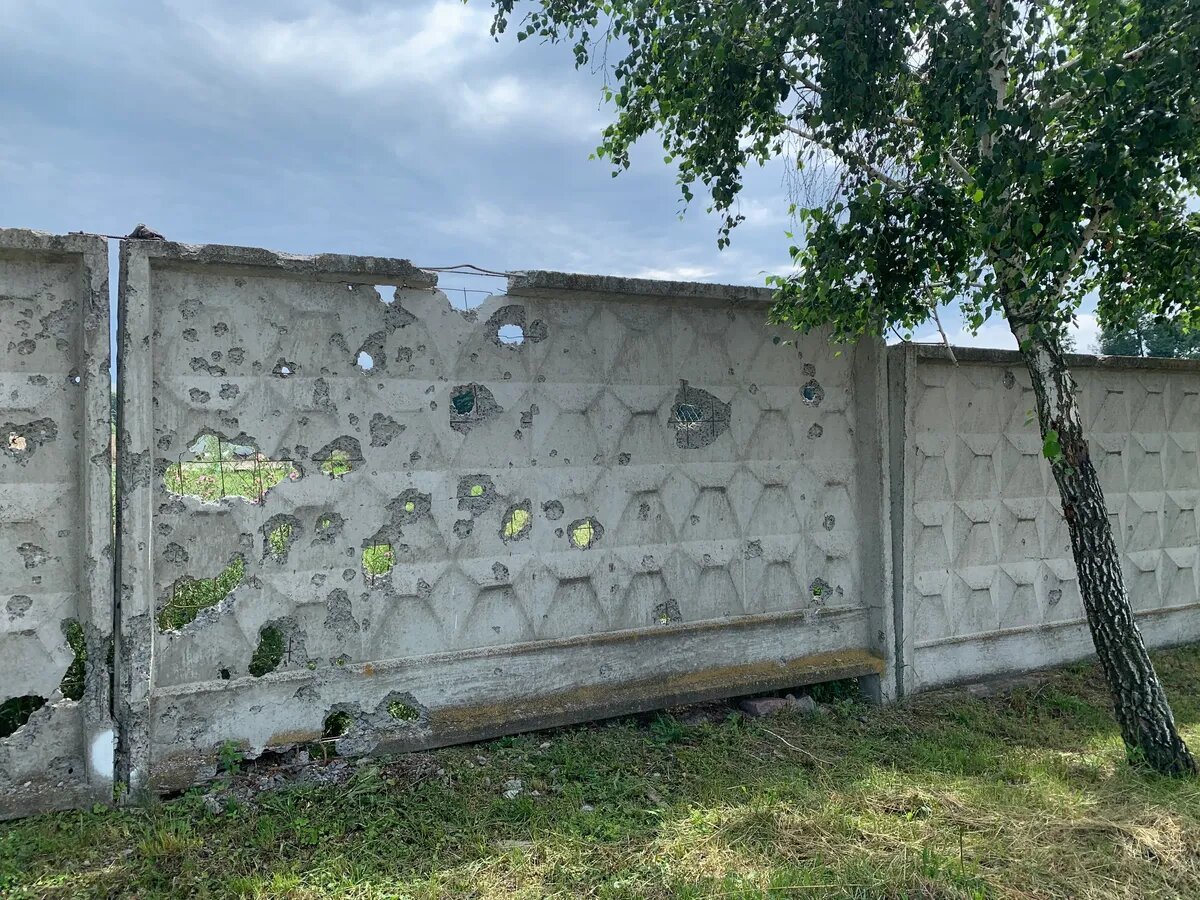
Photo by Olga Musafirova
“It shames me to admit it, but I yelled at the old people,” she says. I asked them: “Do you guys want to die at home?” “Yes, we do...” “Well, then let me take you to the cemetery then, you’re going to die there, I have no time to dig the graves for you!”
Maryna buried seven people in total, both soldiers and civilians. She would put the dead bodies into black plastic bags and set up makeshift coffins. She did not, however, bring the dead bodies to the cemetery, as it was too dangerous.
“We had sunny cold weather on 18 March, so I said: ‘Either we bury them today, or we don't bury them at all.’ Somehow this worked on the old folk, and they agreed to evacuate.
A total of forty people decided to stay in the village. The territorial defence had no problem with them: they remained in their houses just as they were told to. Sometimes when there was no shelling, they would go out to get some milk, bread, medicine or learn some news. By that time, the HQ had been moved from the eatery to Radchenko’s house. And then the house was also hit by a shell which destroyed two of its walls.
“The Russians knew our schedule well. They knew exactly when we went out to milk the cows or check the streets. Our soldiers asked me to stop doing everything on my own, they said: ‘Maryna, you won't be lucky for too long.’ And I taught them prayers, taught them to thank Our Lord and the Army.”
When Russians started to retreat from Kyiv, they attempted to grind the village down; 110 Grad shells hit Nalyvaikivka on 26 March alone.
“They hit us with Grads and tanks, it was blasting the entire day. The wind was really strong, so many houses caught on fire. I was sitting there milking the cows when our soldiers rushed inside and forced me into the basement, shouting: ‘Stay there and sit tight!’ Several cows were wounded by shrapnels on that day. Three of them died, and I had to slaughter another one, too. We gave the meat to our soldiers, of course.”
There is one more thing I forgot to tell you about about Maryna Radchenko. She graduated from Ukraine’s National Academy for Public Administration in 2019. However, Marharyta Terekhova was elected head of the village instead of Maryna Radchenko. Obviously, the two were out of sorts with each other. The war did not simply establish peace between them: Maryna literally forced Marharyta to evacuate as the latter was relatively new to the place. A few days before that, Maryna hosted Marharyta at her in-laws’ house as if they were the same family.
Russians did not care about Nalyvaikivka’s history, of course. The area has lots of sights: for instance, the Serpent’s Wall, an ancient system of earthworks erected by the Scythians, or the old oak trees who may have seen Severyn Nalyvaiko himself, a folklore hero who lived in 16th century. Most likely, they simply considered Nalyvaikivka a dot on the map.
How wrong they were.
Join us in rebuilding Novaya Gazeta Europe
The Russian government has banned independent media. We were forced to leave our country in order to keep doing our job, telling our readers about what is going on Russia, Ukraine and Europe.
We will continue fighting against warfare and dictatorship. We believe that freedom of speech is the most efficient antidote against tyranny. Support us financially to help us fight for peace and freedom.
By clicking the Support button, you agree to the processing of your personal data.
To cancel a regular donation, please write to [email protected]
